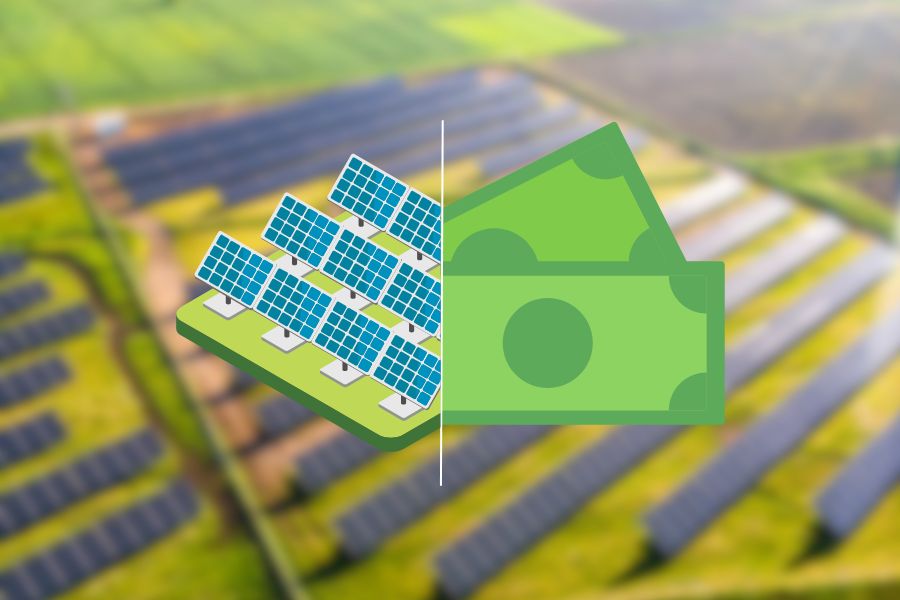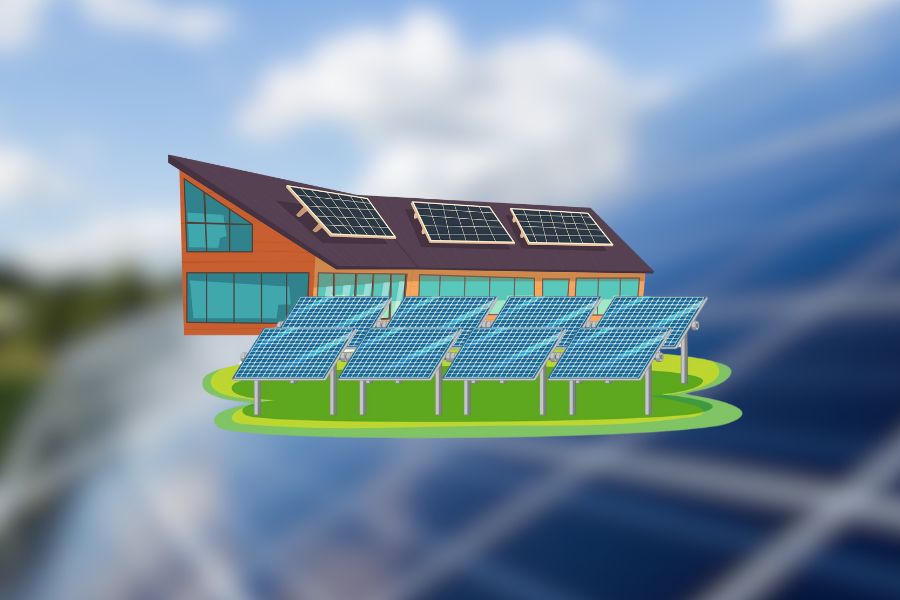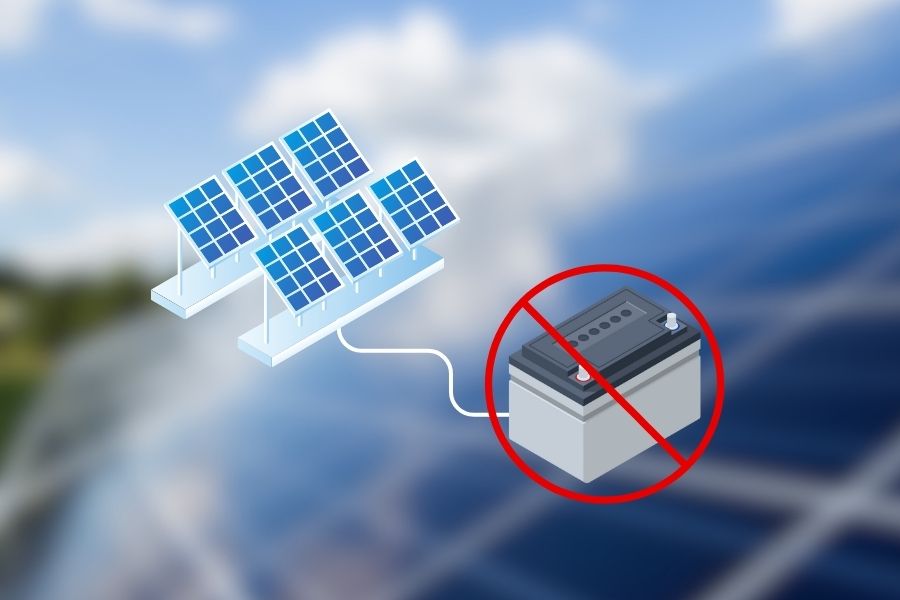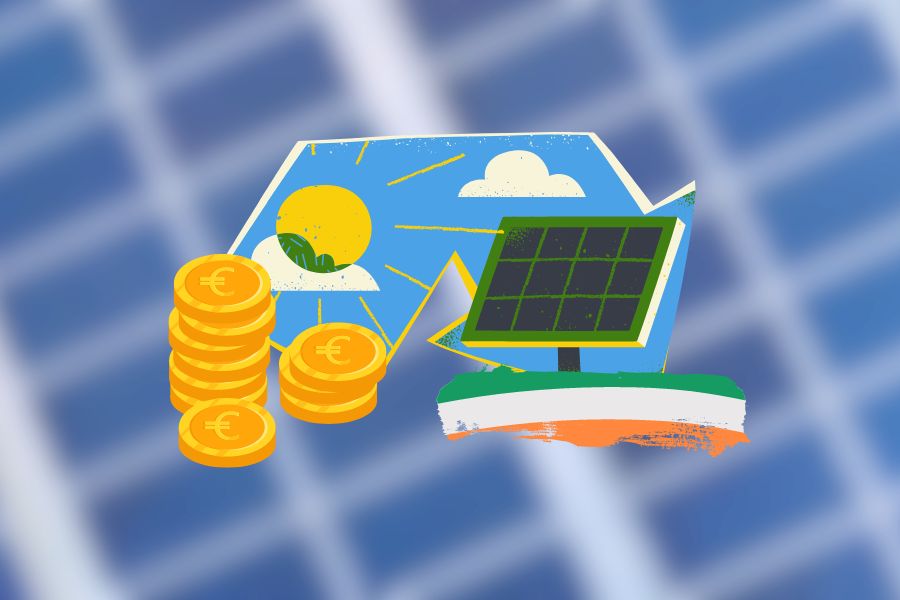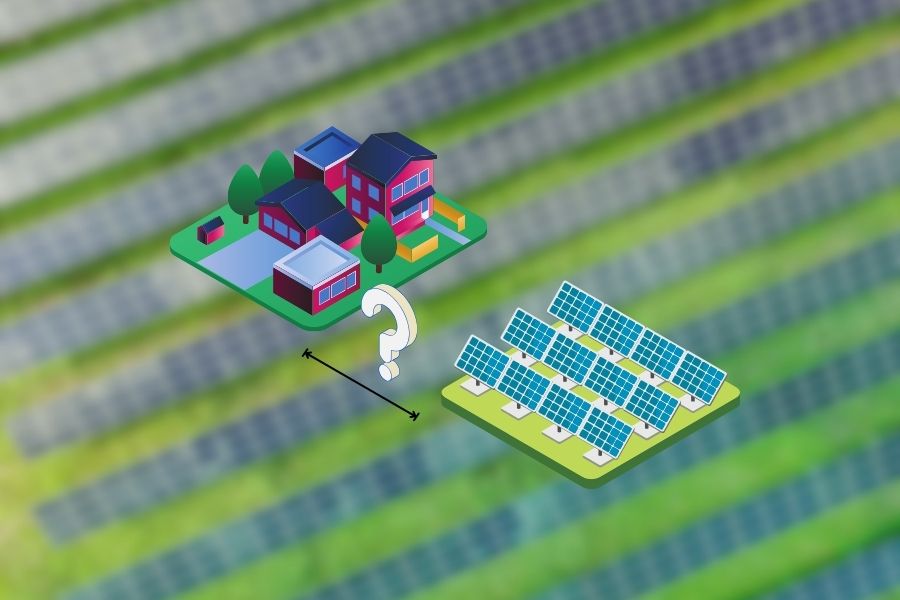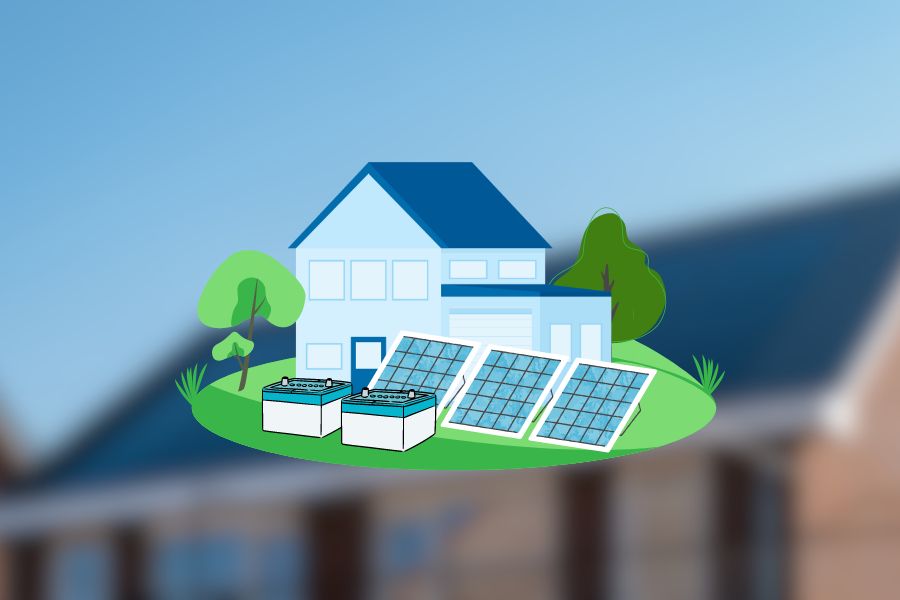Feed-in tariffs in Ireland operate as a financial incentive for producing renewable energy. When your solar panels generate surplus energy beyond your needs, this excess can be sold back to the grid.
The feed-in tariff represents the set rate you receive per unit of electricity fed back. This system helps offset the costs of solar panel installation and enhances the economic viability of your renewable energy investment.
Let’s examine the mechanics of feed-in tariffs in the Irish context and how best to leverage them.
Understanding Feed-in Tariff (FIT)
Feed-in Tariff (FIT) is a policy mechanism that encourages the adoption of solar PV by compensating energy producers for the electricity they generate and feed into the grid.
There are two main types of FIT: fixed and variable. A fixed tariff offers a set rate for each unit of electricity generated and fed into the grid, while a variable tariff adjusts the rate based on market conditions.
Eligible technologies for FIT vary depending on the country, but in Ireland, solar PV systems, wind turbines, hydroelectric, biomass, and biogas are all eligible.
The mechanism of FIT involves the energy producer installing renewable technologies and connecting them to the grid. The electricity suppliers then receive payment for the electricity generated and fed into the grid, regardless of whether they use it.
The role of grid connection is critical to the success of FIT. The energy producer must have a connection to the grid to feed their excess electricity back into it. The energy producer cannot participate in the FIT scheme without a grid connection. Conversely, off-grid living relies on self-sustaining energy solutions and does not benefit from the incentives of the FIT program.
FIT and net metering are often confused, but they are different mechanisms.
Net metering compensates energy producers for the excess electricity they generate and feed into the grid, which offsets the electricity they consume from the grid. On the other hand, FIT pays energy producers for all the electricity they generate and feed into the grid, regardless of whether they use it.
Benefits of Feed-in Tariff
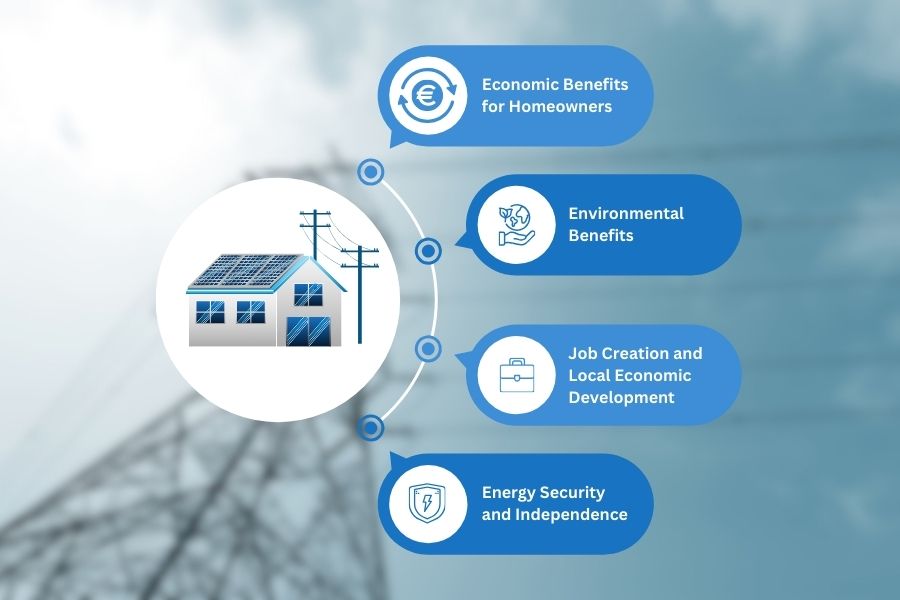
Feed-in Tariff (FIT) offers numerous benefits to individuals, communities, and the environment. Here are some of the significant benefits of FIT:
Economic Benefits for Homeowners
FIT provides financial incentives for homeowners who invest in solar photovoltaic sources and guarantees a fixed payment for every unit of electricity generated and fed into the grid that can help homeowners offset their energy bills and provide additional income.
Environmental Benefits
FIT encourages using renewable energy sources, such as solar PV and wind turbines, which emit significantly less greenhouse gases than fossil fuels. It helps to reduce carbon emissions and mitigate climate change, preserving the environment for future generations.
Job Creation and Local Economic Development
FIT can create new jobs in the renewable energy sector, including smart meter installation, wind turbine maintenance, and biomass production. FIT can also lead to the development of local supply chains as communities invest in solar panel installations and support local businesses.
Energy Security and Independence
FIT reduces the reliance on fossil fuels and foreign energy sources, enhancing energy security and independence. By generating energy locally through renewable sources, communities can become more self-sufficient and less vulnerable to energy price shocks and supply disruptions.
Challenges and Limitations of Feed-in Tariff
One significant challenge is cost-effectiveness and affordability. FITs require a good investment from governments, which can lead to higher energy prices for consumers. This cost may be unsustainable later, particularly if renewable energy technologies continue to become cheaper.
Another limitation is the potential reduction in investment in renewable energy technologies due to the lack of competition. FITs guarantee a fixed price for renewable energy, which may discourage innovation and technological advancements that could lower the cost of renewable energy.
Capacity limitations are also a challenge for FITs. If too many renewable energy systems connect to the grid, the infrastructure may not be able to handle the additional electricity. That can lead to grid instability and may require expensive upgrades to the electrical grid.
Furthermore, the lack of political will and support can also hinder the effectiveness of FITs. Some governments may not prioritize the deployment of renewable energy. In addition, they may not provide the necessary funding or regulatory support for FITs to be successful.
Micro-renewable combined heat systems, surplus solar power, and surplus electricity also present FIT challenges. Micro-renewable combined heat systems, which generate electricity and heat, may not be eligible for FITs as they do not exclusively generate electricity.
Surplus solar power may also be an issue, as excess energy generated by solar PV systems may not be able to be sold back to the grid due to capacity limitations.
This means households may not receive the full financial benefit of their solar PV systems. Finally, the sale of surplus electricity back to the grid may be subject to additional fees and regulations, making it less financially viable for households to invest in renewable energy technologies.
Feed-in Tariff in Ireland – An Overview

The Renewable Energy Feed-in Tariff (REFIT) scheme’s purpose in Ireland is to help the country achieve its target of generating 40% of its electricity from renewable energy sources.
Before February 15, 2022, Ireland did not have a feed-in tariff system. As a result, if you generated surplus electricity, it was given away to the grid at no cost. However, in early 2022, the CRU (Commission for Regulation of Utilities) implemented a new framework that permits micro-generation customers to receive payment for the surplus energy they export to the grid.
Status of FIT in Ireland
FIT is currently available in Ireland for renewable energy technologies such as wind, hydro, solar PV, and anaerobic digestion. However, FIT is only available for installations with up to 6 MW capacity. The Commission administers FIT for Regulation of Utilities (CRU), which sets the FIT rates and conditions.
Based on data from the Sustainable Energy Authority of Ireland, Ireland’s share of renewable electricity (RES-E) in its energy mix was 33.2%. It falls short of the national target of 40% by 2020. Additionally, the share of renewable heat (RES-H) in Ireland’s energy mix was 6.5%.
Current FIT Rates and Conditions
The FIT rates in Ireland are reviewed and updated periodically by the CRU. As of May 2023, the FIT rates for renewable energy sources in Ireland are as follows:
- Wind energy: 7.5 cents per kWh
- Hydro energy: 9.5 cents per kWh
- Solar PV energy: 9.0 cents per kWh
- Anaerobic digestion: 13.0 cents per kWh
They guarantee these rates for 15 years from the date of commissioning, subject to certain conditions.
Market Competition and Challenges
FIT in Ireland faces stiff competition from other policies like the Renewable Energy Support Scheme (RESS) and the Green Certificates scheme. These policies also provide financial incentives for renewable energy producers. However, they have different eligibility criteria and payment mechanisms.
Additionally, the FIT rates in Ireland are relatively low compared to other European countries, which makes it difficult for renewable energy producers to recover their costs and make a profit.
Comparison With Other European Countries
Ireland’s FIT rates are relatively low when compared to other European countries. For example, Germany offers a FIT rate of around 9-11 cents per kWh for solar energy. Spain can offer a FIT rate of around 7-12 cents per kWh for wind energy.
Additionally, some European countries have more generous FIT schemes, such as Italy and France, which offer FIT rates of around 20 cents per kWh for some renewable energy sources.
Feed-in Tariff for Non-domestic Solar Installations
Clean Export Premium (CEP) tariff will be available for non-domestic installations, such as those on farms and community centers, that have a capacity ranging from 6kWp to 50kWp.
Per this tariff, non-domestic solar installations will receive €0.135 per kilowatt-hour (kWh) of electricity generated in 2023. However, the tariff is capped at 80% of generation capacity to encourage self-consumption.
It means that if you have a farm with a 10kWp solar array installed. You receive payment for the excess electricity you export back to the grid, but only up to a maximum of 8kW at any given time.
Applying for the Micro-generation Support Scheme (MSS)
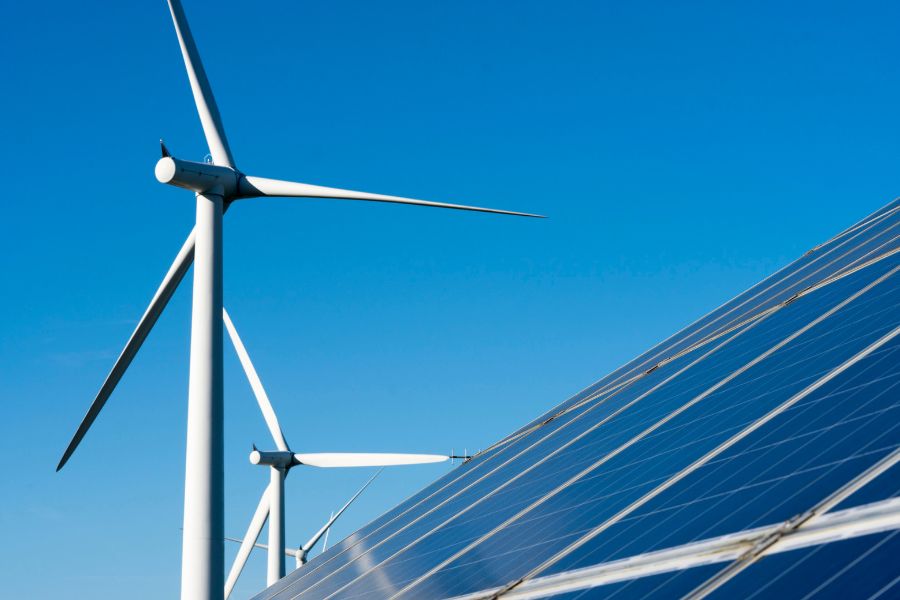
The Microgeneration Support Scheme (MSS) is a program in Ireland. It financially supports homeowners and businesses that generate electricity using renewable energy sources. The sources include home solar PV systems, micro-wind, micro-hydro, and micro-renewable combined heat and power (CHP).
When applying for the Micro-generation Support Scheme in Ireland, you must first determine if you are eligible. The scheme is available to homeowners, farmers, community groups, and small businesses that generate renewable electricity with a capacity of up to 50kW.
Once you have installed the necessary equipment, you must register your installation with the relevant authorities, including the Sustainable Energy Authority of Ireland (SEAI) and your energy supplier.
After registering, you can apply for the scheme through the SEAI by providing installation details. If your application is successful, you will receive payments for the excess electricity you generate and export to the grid.
The MSS is subject to change, and the eligibility criteria, application process, and payment rates may be updated over time. Before applying for the scheme, you should check the SEAI website for the latest information.
Clean Export Guarantee (CEG) Tariff – Get Paid for Surplus Energy
The Clean Export Guarantee (CEG) tariff is a payment scheme that allows households and businesses in Ireland to receive payment for the excess renewable energy they generate and export to the grid.
The scheme applies to solar panels, wind turbines, and other renewable energy technologies. The energy supplier determines the amount paid for the surplus energy. It is usually lower than the retail price of electricity.
A smart meter is required to accurately measure the quantity of energy exported back to the grid. The CEG tariff encourages households and businesses to invest in renewable energy. It also helps them reduce their carbon footprint while generating an additional income stream.
Conclusion
The introduction of the Feed-in Tariff in Ireland has paved the way for greater investment in renewable energy sources. The scheme has incentivized households and businesses to install solar panels and other renewable energy technologies by offering excess energy generation payments.
While there have been challenges, including the limited funding availability and ongoing changes to the tariff rates, the Feed-in Tariff has helped Ireland move closer to its national target of 40% renewable energy by 2020.
As the scheme continues to evolve, there is hope that more households and businesses will take advantage of the benefits of renewable energy generation and contribute to a more sustainable future.

